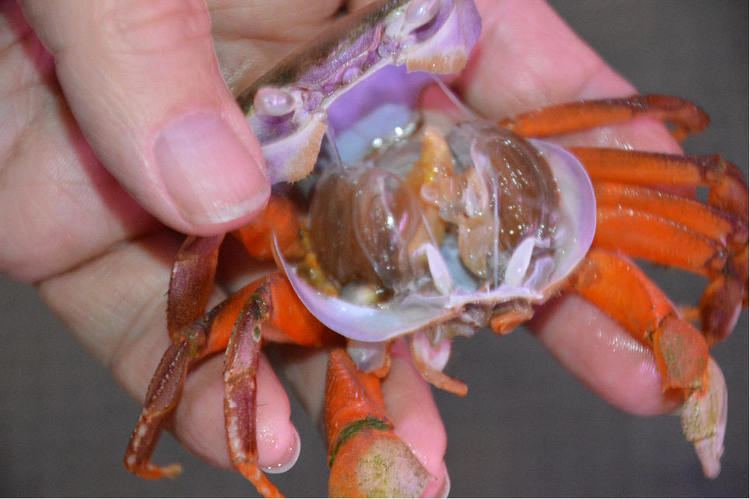Infraorder Brachyura Rank Species | Superfamily Grapsoidea | |
Similar Crab, Cardisoma, Crustacean, Geosesarma, Gecarcinus quadratus | ||
Feeding my pet crab cardisoma armatum
Cardisoma armatum is a species of terrestrial crab.
Contents
- Feeding my pet crab cardisoma armatum
- Cardisoma armatum
- Names
- Distribution
- Description
- Ecology and life cycle
- References
Cardisoma armatum
Names

It is sometimes referred to as the (African) rainbow crab, (Nigerian) moon crab or patriot crab. Adults are sometimes labelled as soapdish crabs in the pet industry. This name derives from their aggressive nature as adults and when being shipped to pet stores, they are often packed in soap dishes to prevent them from killing each other. The names moon crab and soapdish crab are sometimes applied to other similar crab species, leading to frequent confusion with other colourful crabs such as the three remaining species of Cardisoma, Gecarcinus ruricola and G. quadratus (all except C. carnifex from the Americas).
Distribution

Cardisoma armatum originates from coastal regions of western Africa, but it also occurs inland along some deltas (e.g. the Volta river delta), and on islands such as Cape Verde.
Description
When young, these crabs typically have a blueish/violet carapace, red–coloured legs, and whitish claws. This coloration usually fades as the animal grows older. They can reach a carapace size of 20 cm across, although captive individuals rarely reach this size.
Ecology and life cycle
Their diet consists mainly of fruit, vegetation and carrion. They are known to be cannibalistic, and will consume smaller crabs, small reptiles and amphibians, molluscs, fish, and insects if they can catch them. While juvenile and adult crabs spend most of their time on dry land, the females must return to the ocean to release their eggs. The eggs hatch into microscopic larvae, and later on develop into young crabs. If the young do not make landfall by the time they are fully developed they will drown. This is a land crab and cannot remain submerged for long periods.

